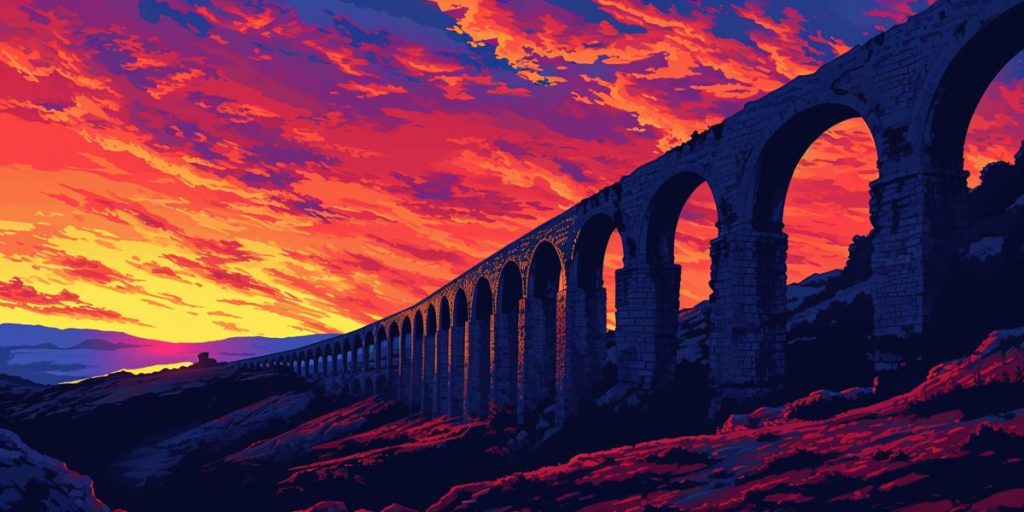The Kamares Aqueduct, also known as the Bekir Pasha Aqueduct, is a historical monument in Larnaca, Cyprus that showcases the engineering prowess of the Ottoman period. Built in 1747, it provided water to the city until 1939 and is now celebrated as an architectural marvel and cultural venue, attracting visitors with its illuminated arches and scenic surroundings near Larnaka Salt Lake.
What is the historical significance of Kamares Aqueduct in Cyprus?
Kamares Aqueduct, also known as Bekir Pasha Aqueduct, is a historical monument in Larnaca, Cyprus, symbolizing Ottoman engineering excellence. Built in 1747, it provided water to the city until 1939. Today, it’s celebrated as an architectural marvel, a testament to Cyprus’s Ottoman heritage, and repurposed for cultural events, demonstrating its enduring legacy. Visitors can enjoy its illuminated arches and scenic surroundings near Larnaka Salt Lake.
Kamares Aqueduct stands as a testament to the engineering prowess of the past. Also known as the Bekir Pasha Aqueduct, this structure near Larnaca, Cyprus, has captured the attention of visitors with its historical significance and architectural grandeur. Built in the 18th century, it showcases the blend of practical function and aesthetic design that was a hallmark of its era.
The aqueduct’s creation began in 1747, under the patronage of Ebubekir Pasha, the Ottoman Governor of Larnaca who was noted for his commitment to public works. With its 75 arches stretching majestically across the landscape, the aqueduct was not only a feat of engineering but also a source of life, carrying water to the arid areas around Larnaca, the Salines, and even to ships docked nearby. It continued to serve the community until 1939 when modern advancements rendered it obsolete.
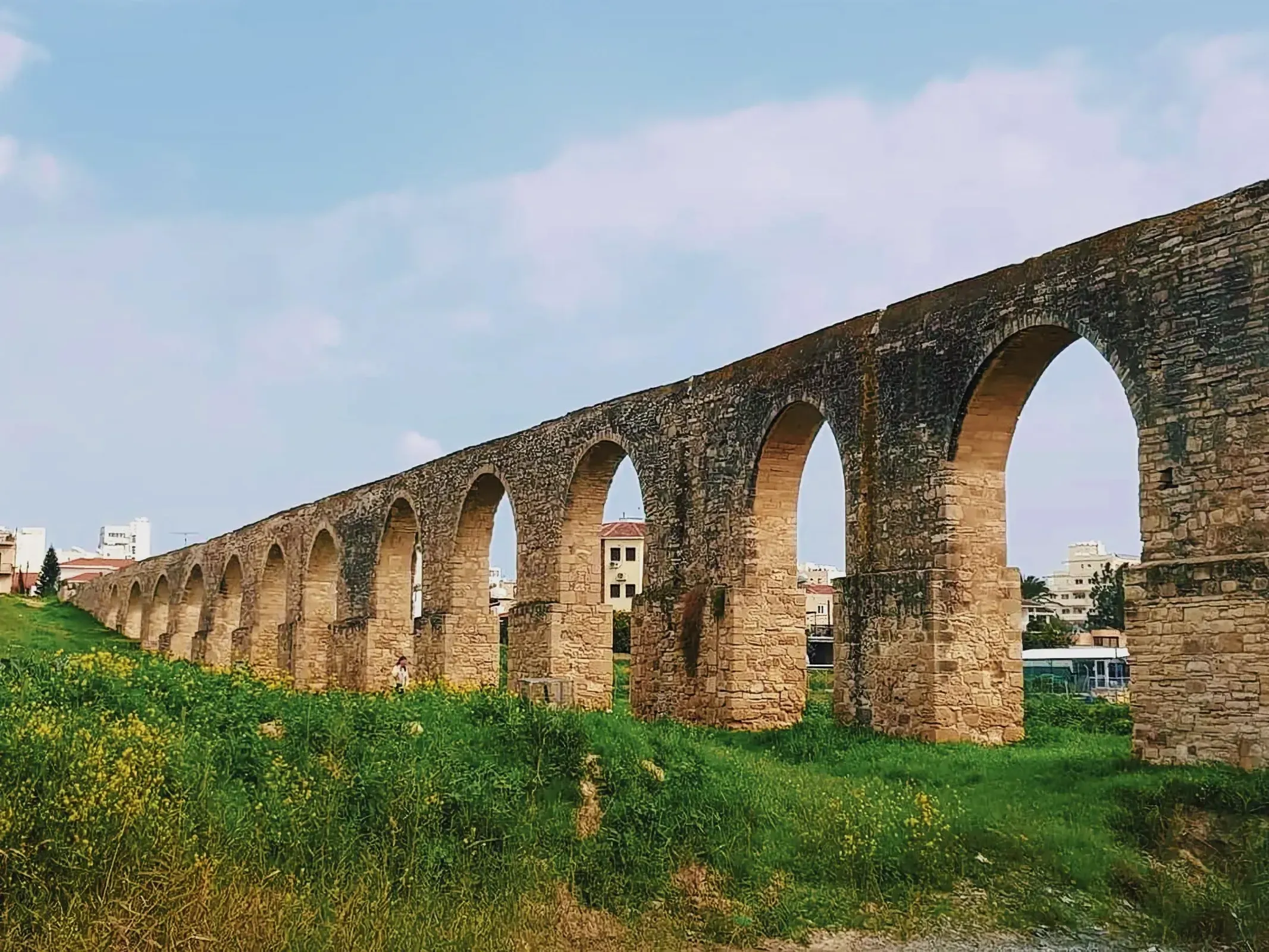
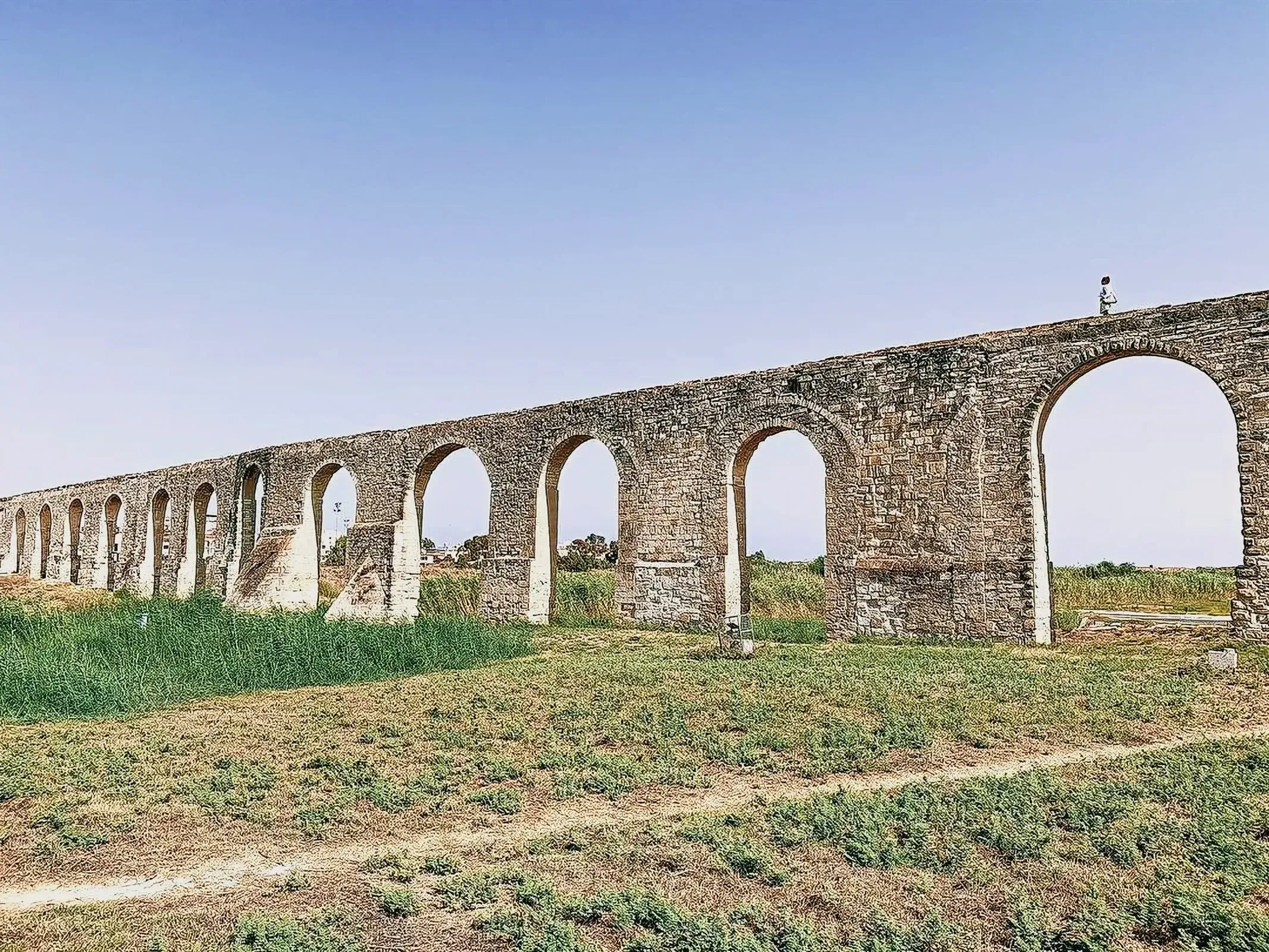
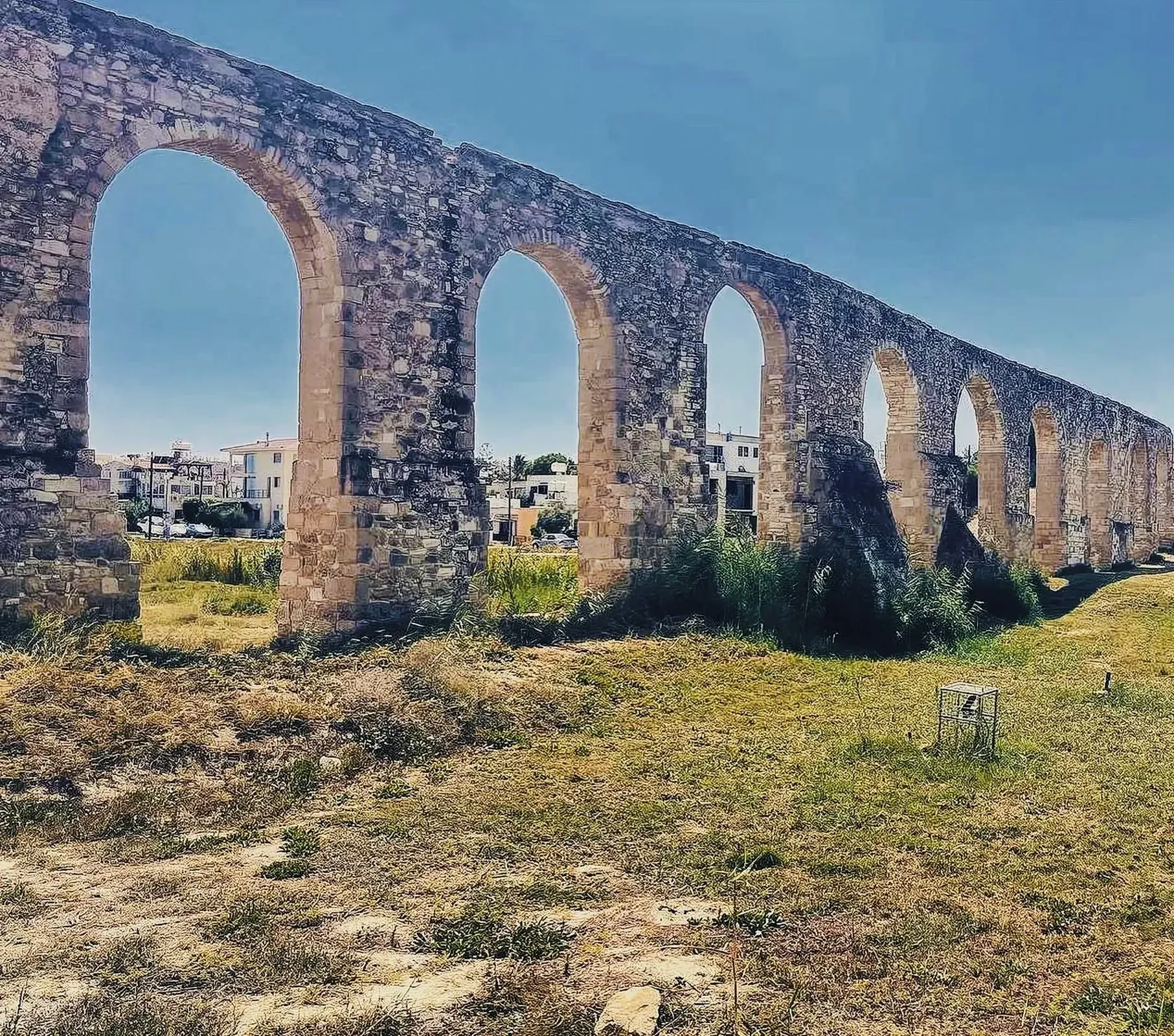
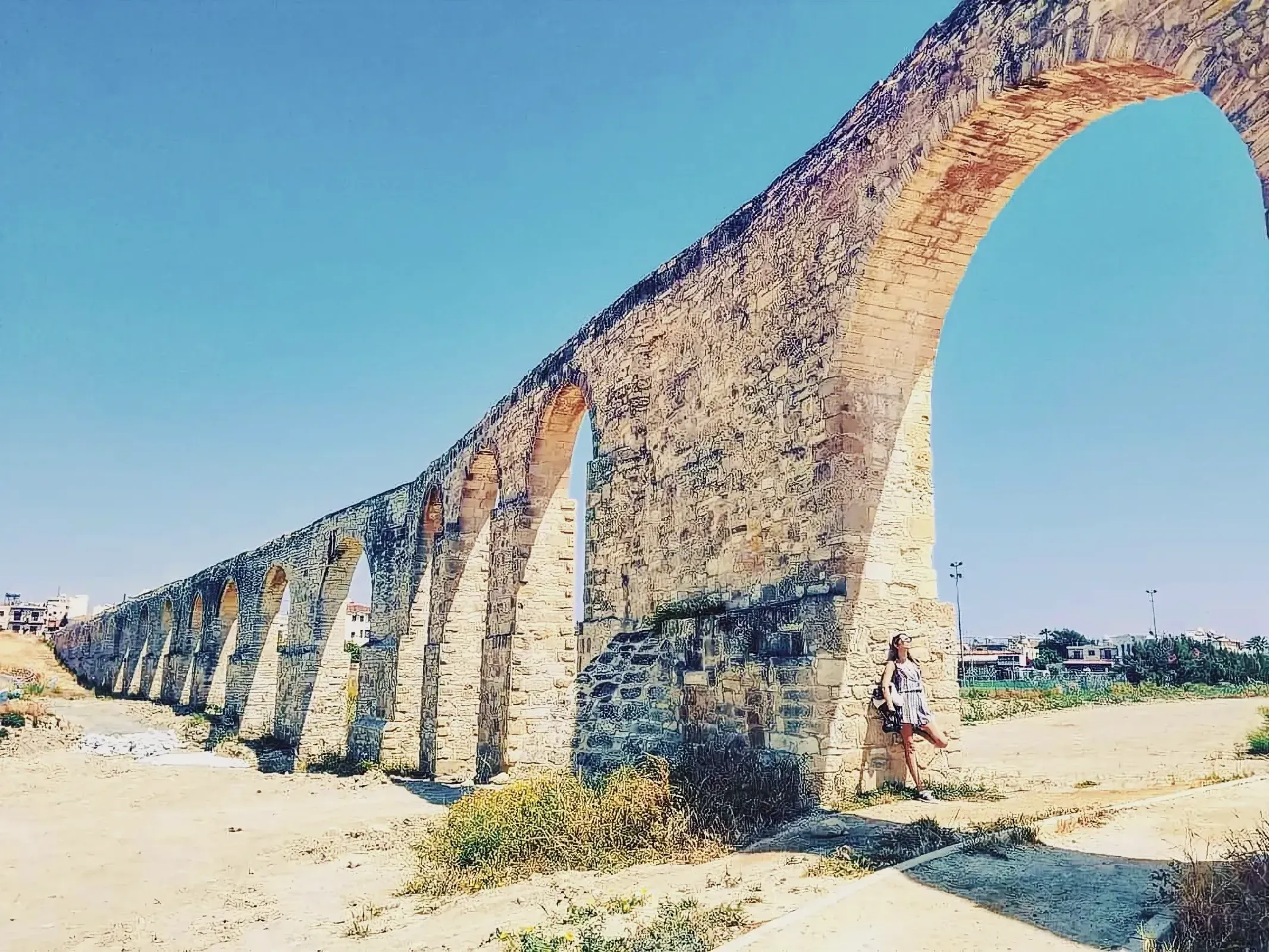
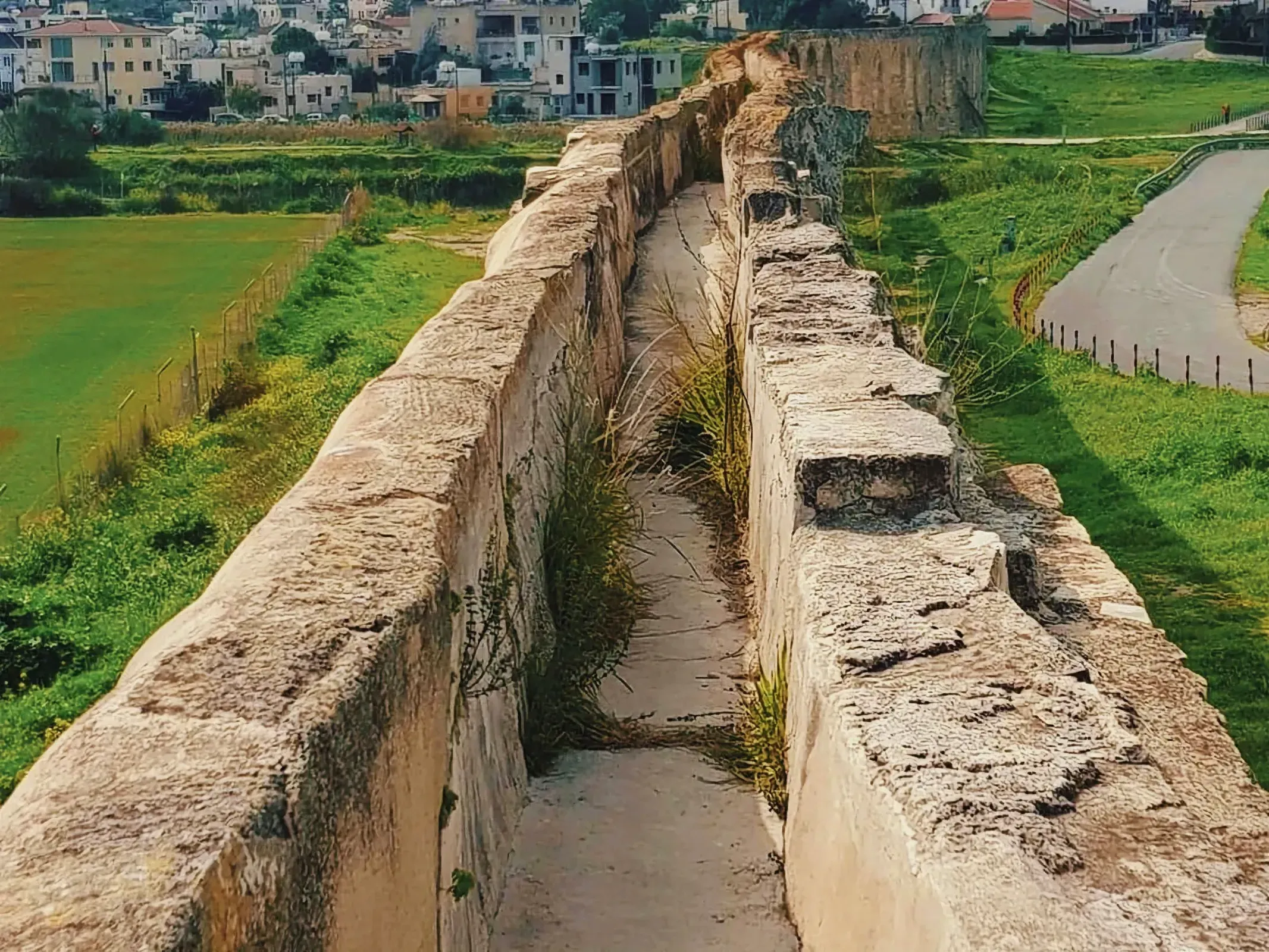
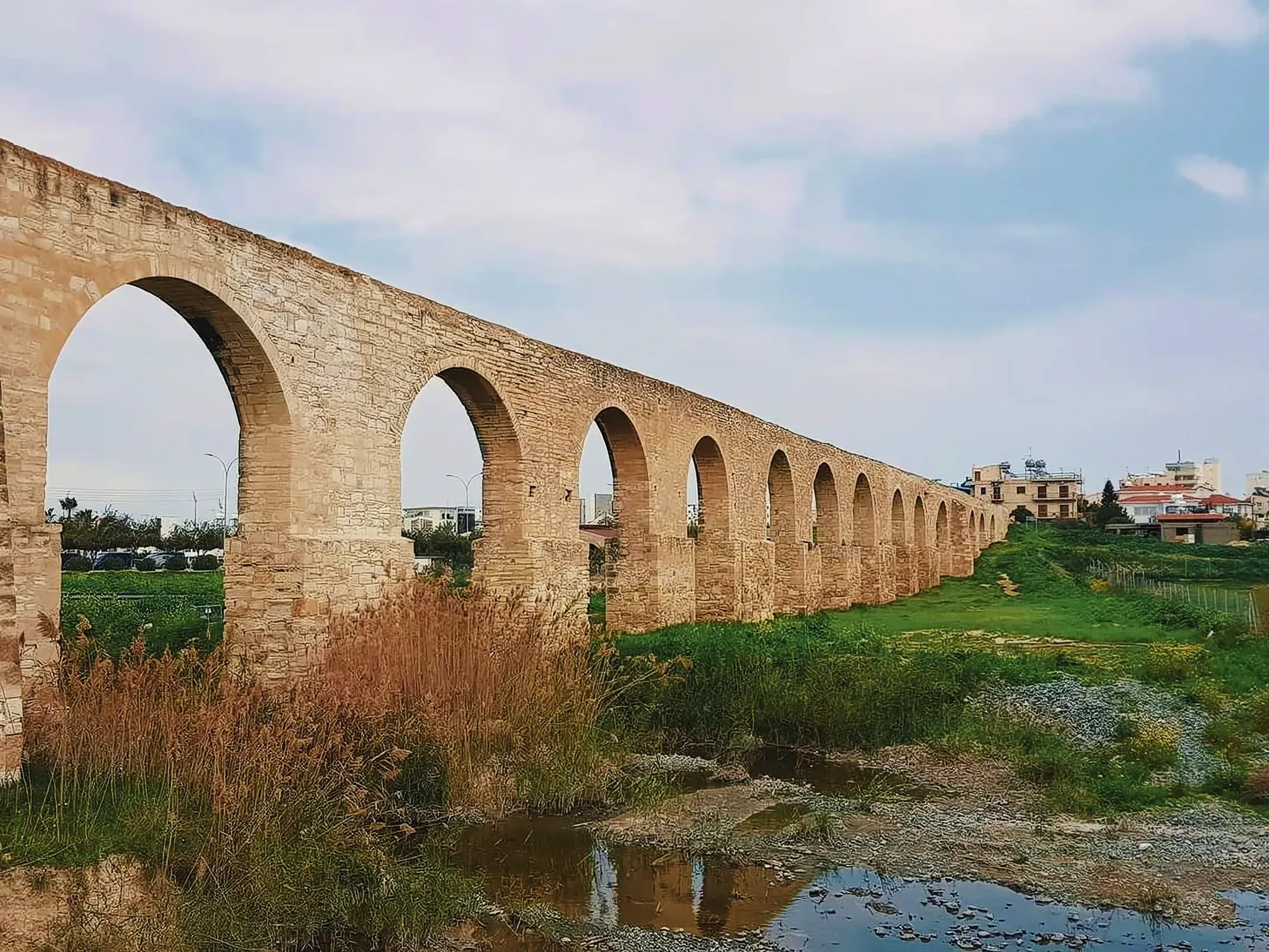
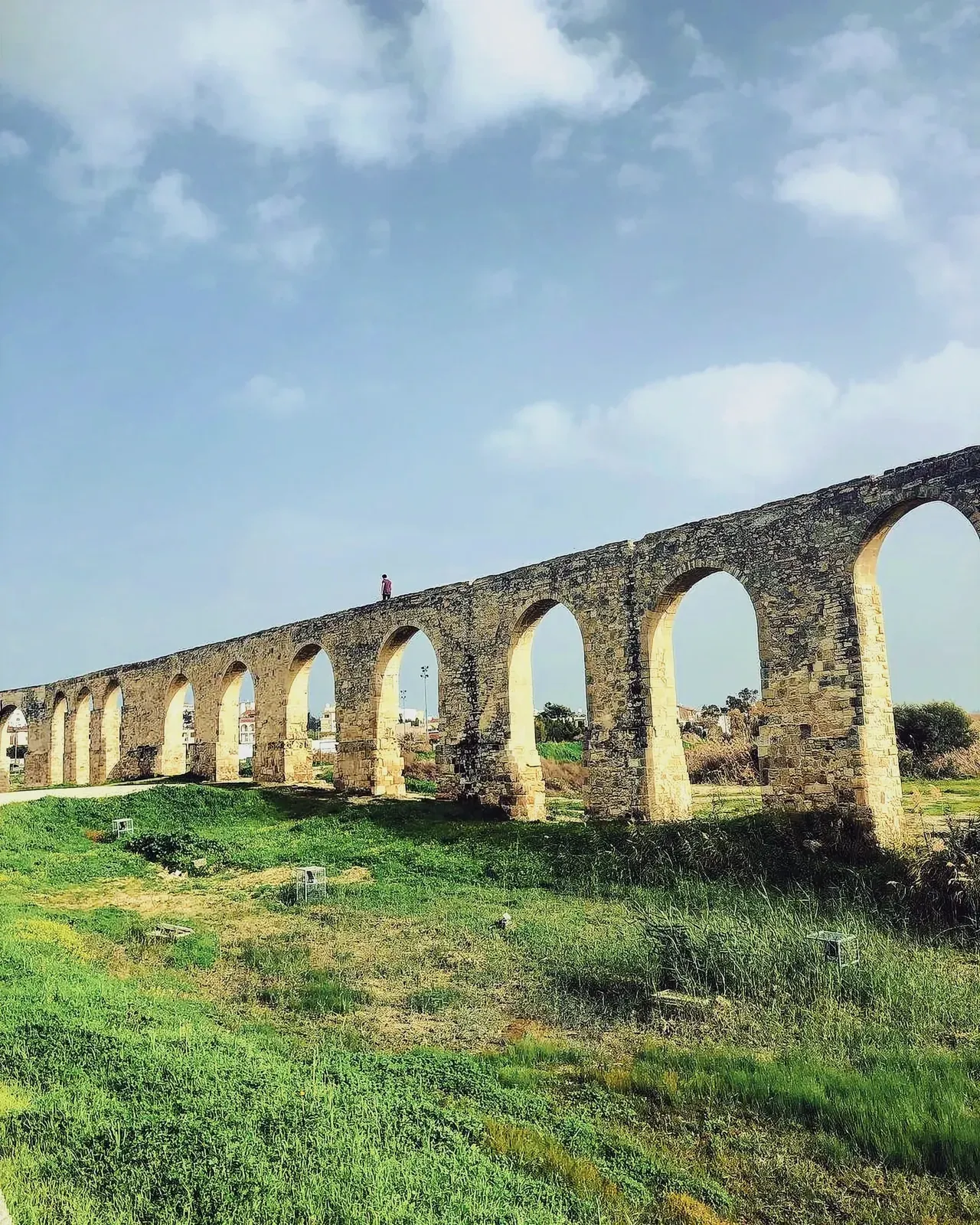
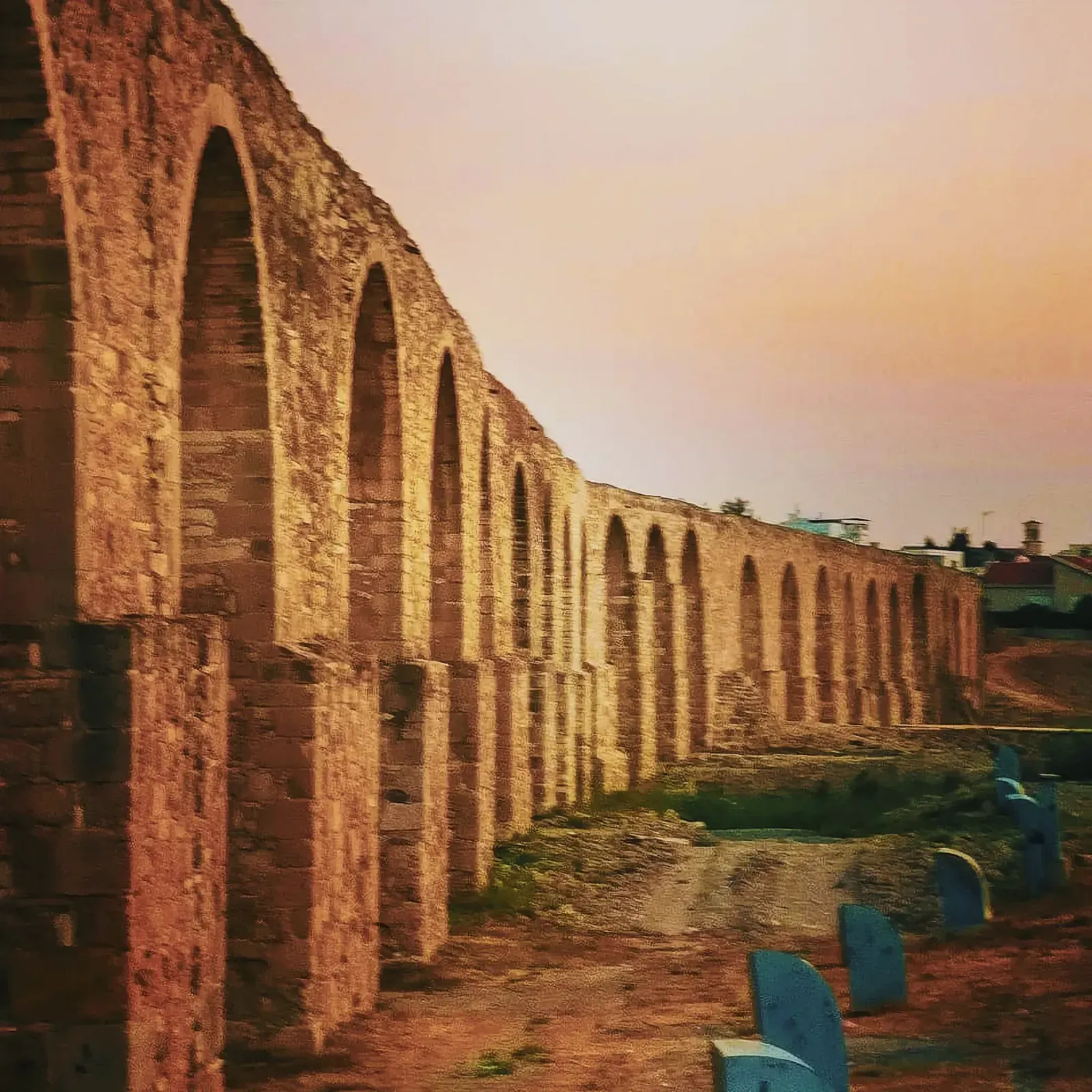
Architectural Marvel and Historical Monument
The construction of the Kamares Aqueduct was completed in 1750, with a total cost of 50,000 qirsh, funded entirely by Ebubekir Pasha. The structure exemplified the Ottoman influence in Cyprus, mirroring the Roman style aqueducts that were engineered to transport water over long distances. The aqueduct’s design and durability were so impressive that they drew the admiration of foreign travelers and historians, who regarded it as a significant monument of the Ottoman period in Cyprus.
At night, the aqueduct takes on a new life as it is beautifully illuminated, casting a glow on the surviving arches. Visitors can stroll along the cobbled path lined with benches, taking in the sight of this monument that marries history with serene natural surroundings. The adjacent footpath connects to the Larnaka Salt Lake, providing an enriched experience of the area’s natural and historical beauty.
The Aqueduct’s Enduring Legacy
Remarkably, the Kamares Aqueduct’s legacy extends beyond its original purpose. It was a source of fresh water for the inhabitants of Larnaca for nearly two centuries. Today, it stands not only as a historical relic but also as a cultural venue. The Larnaka municipality has repurposed the lawns in front of the aqueduct as a space for open-air concerts and community events, celebrating the structure’s continued relevance to the city’s social life.
The aqueduct is easily accessible from the old road to Limassol and is situated close to the K Cineplex, about 3.6 kilometers from the bustling Finikoudes Beach. Visitors are advised against climbing the structure to prevent accidents and preserve its integrity. Instead, they are encouraged to walk between and inside the arches, experiencing the marvel of its construction up close.
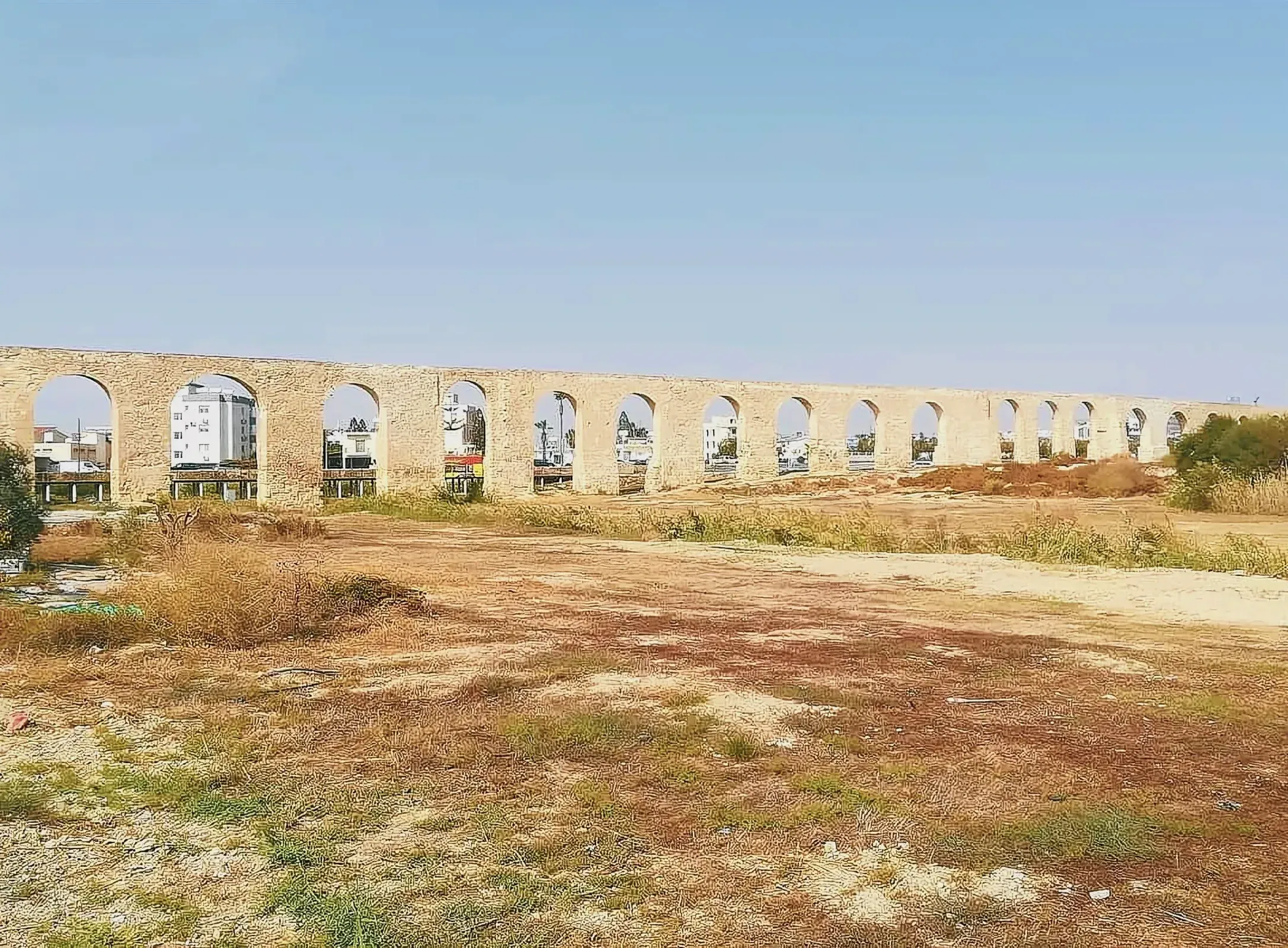
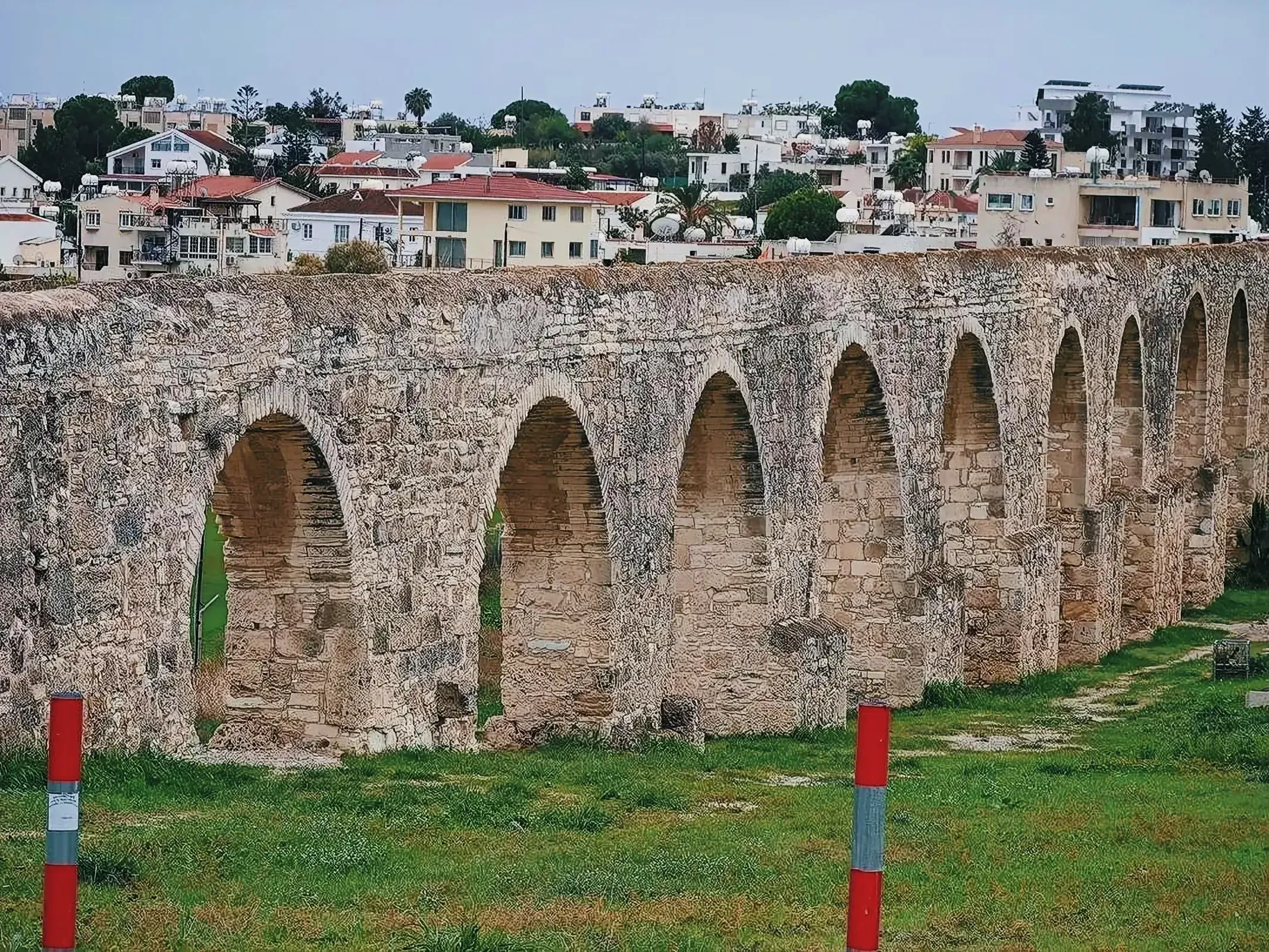
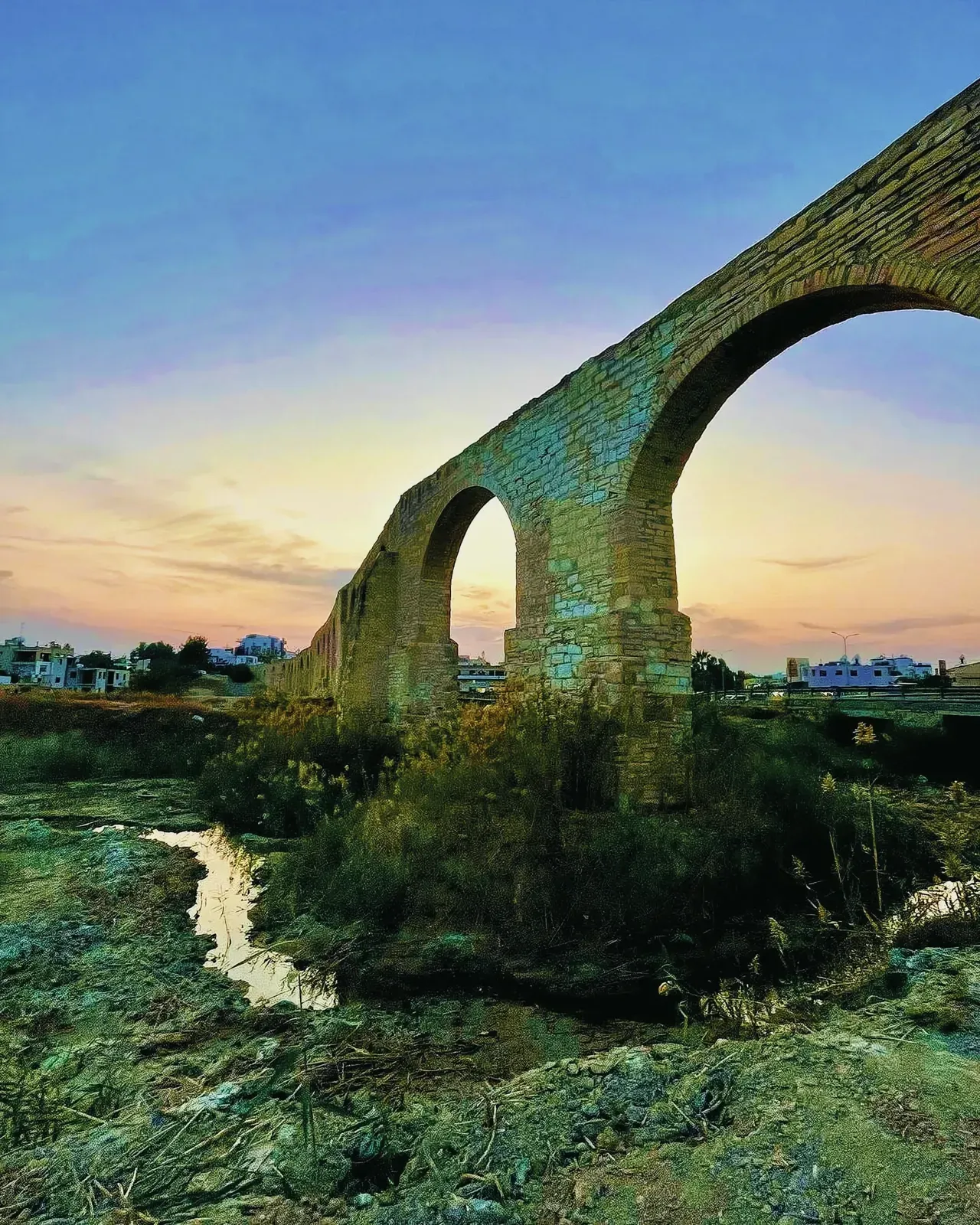
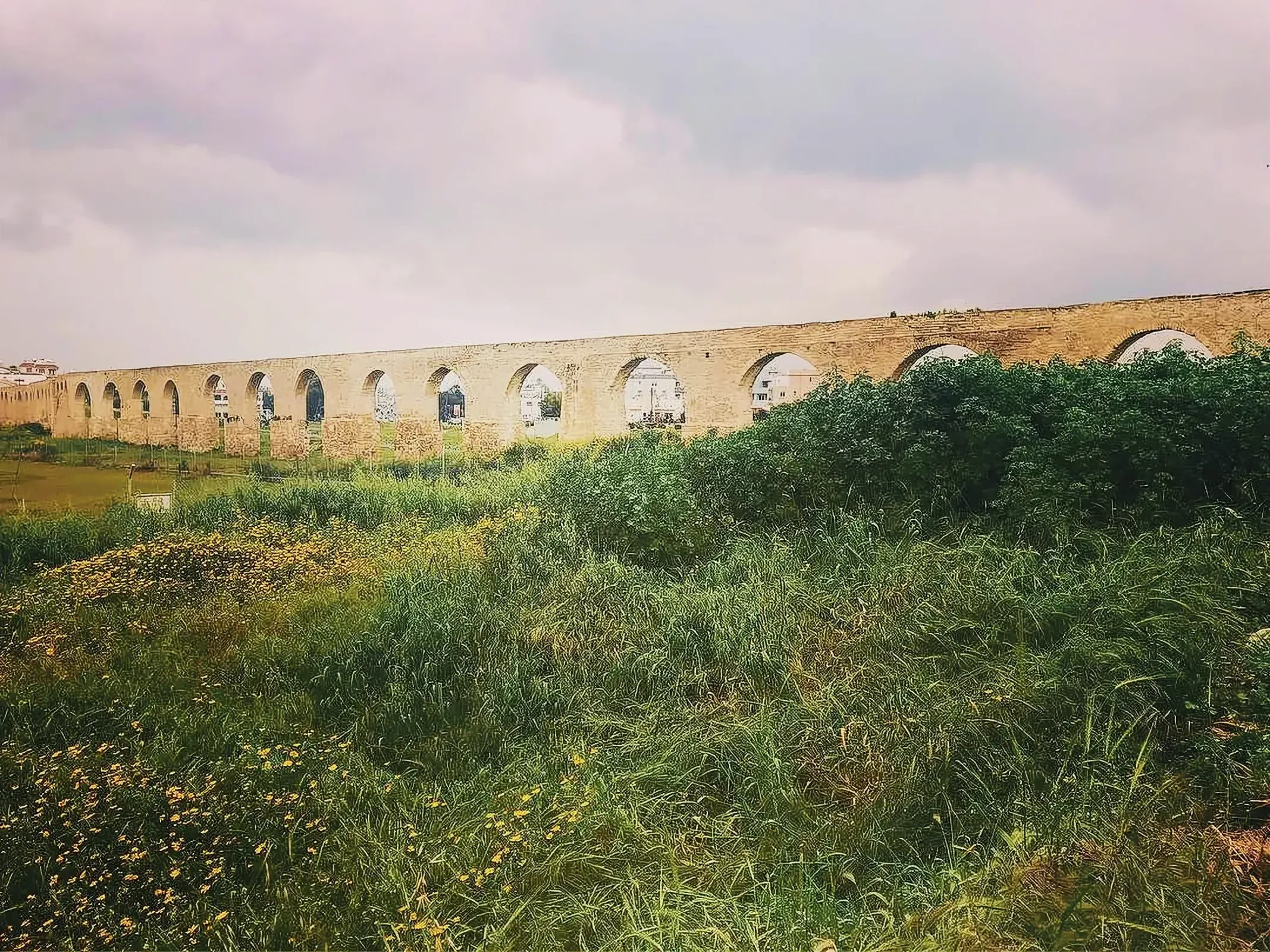
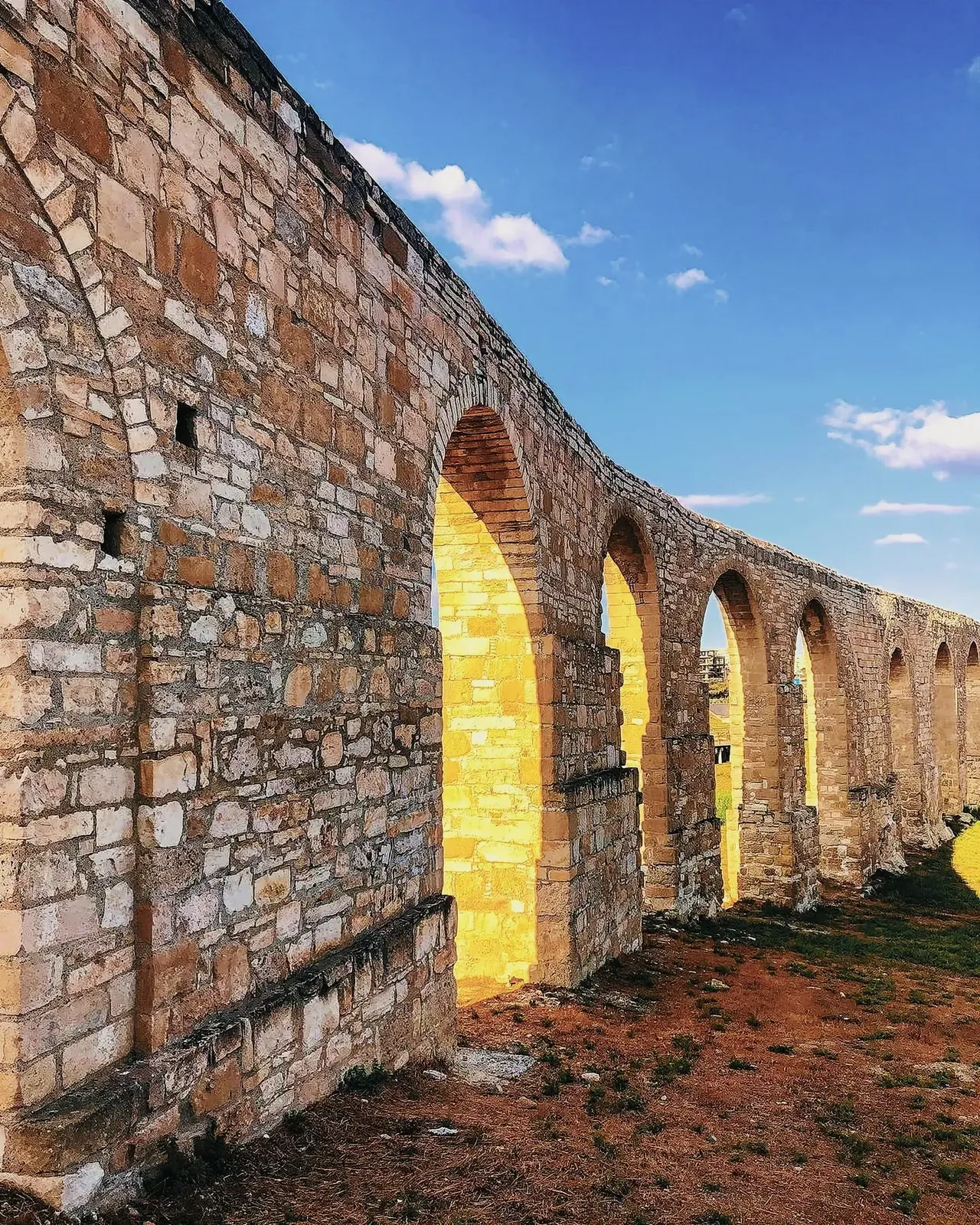
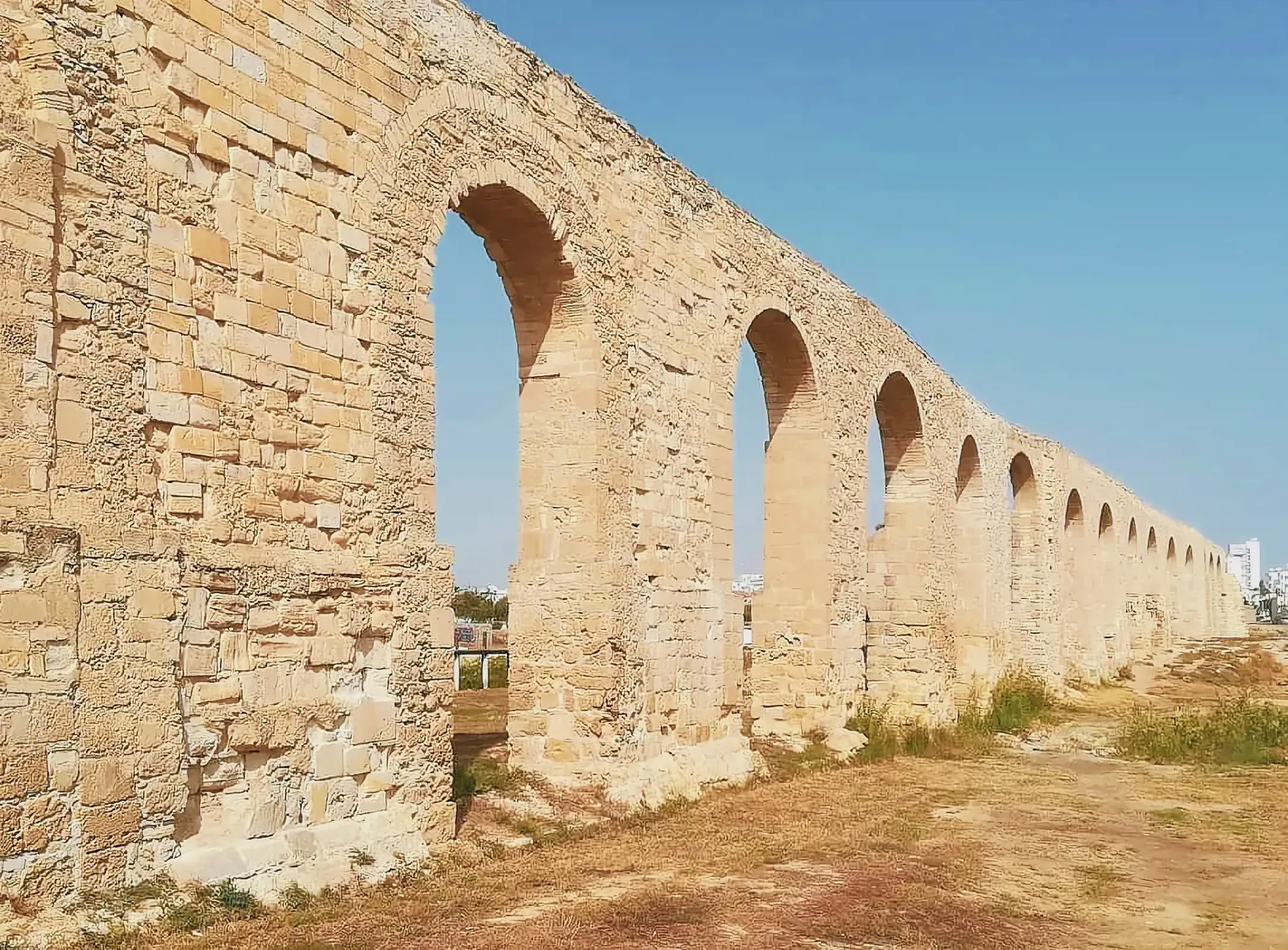
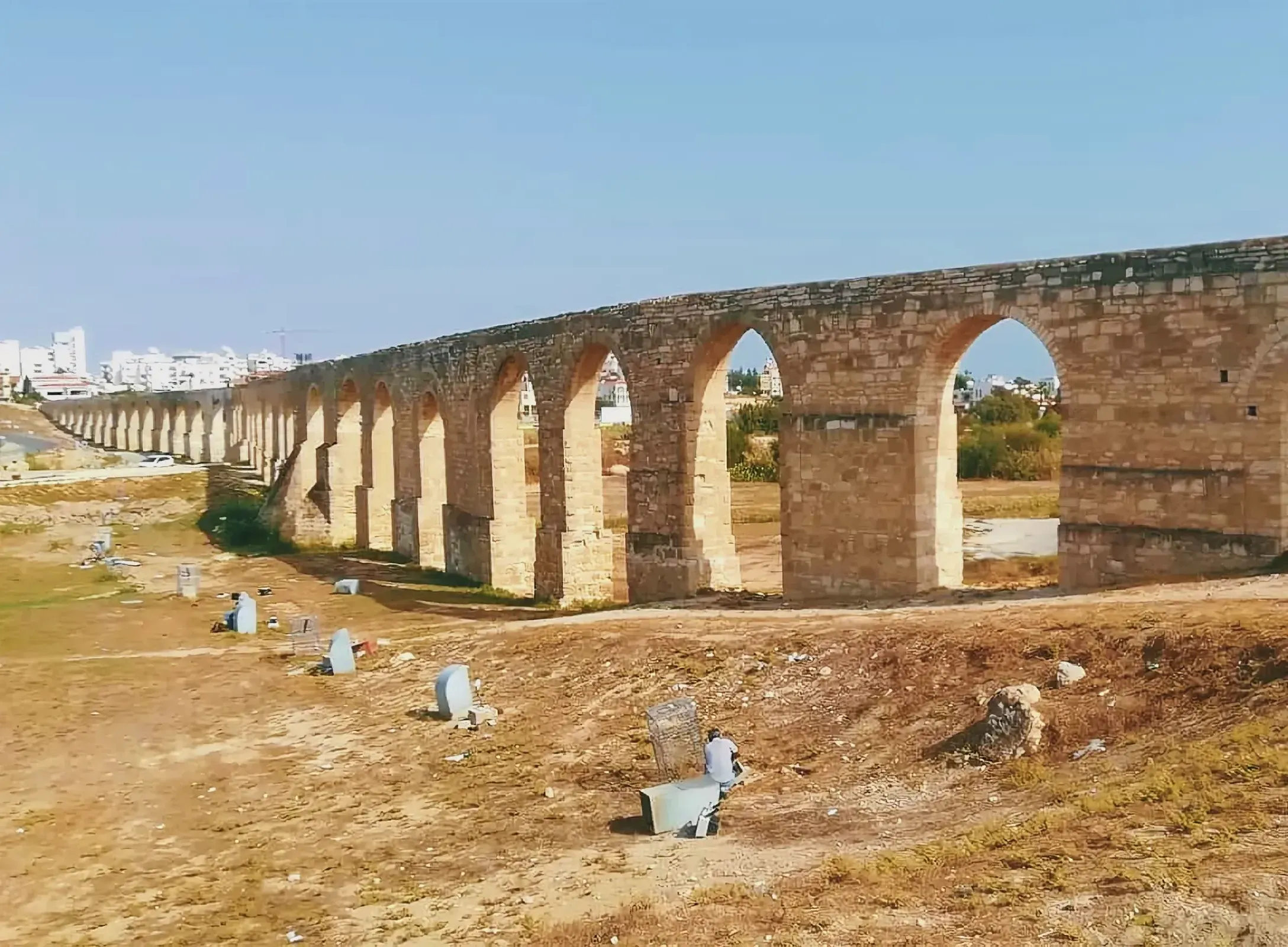
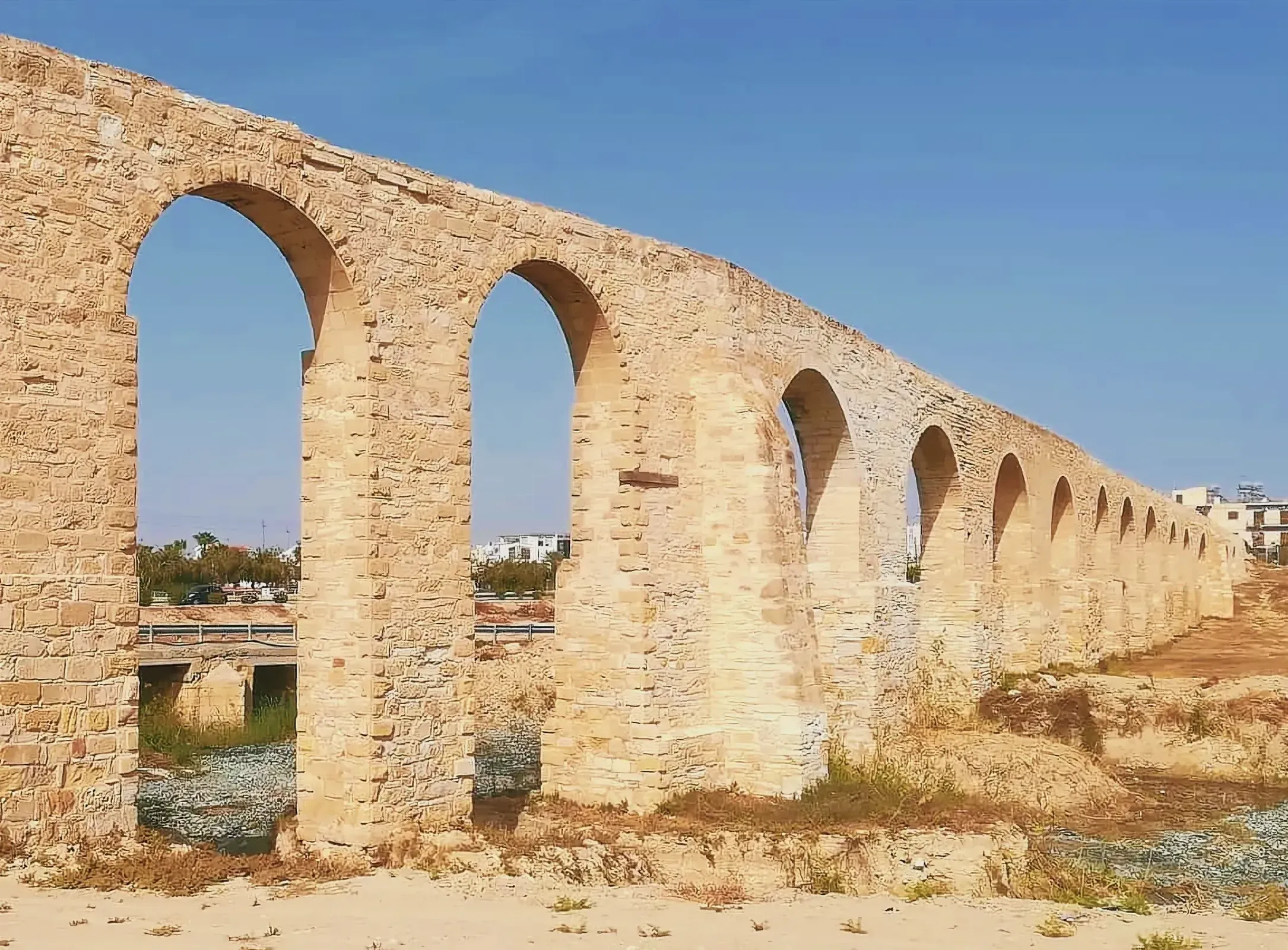
Navigating the Aqueduct Today
For those looking to explore the aqueduct and its surroundings, a walk starting from the Salt Lake area through the woods and around the lake offers a scenic route to this historic site. The natural walk can be a bit muddy but is generally easy to navigate. Along the way, visitors can enjoy other attractions, including the famous flamingoes that frequent the salt lake.
Although the tourist attractions in Larnaca are limited, the Kamares Aqueduct stands out as a must-see site. The absence of an information board means that visitors might want to research the aqueduct’s history beforehand to fully appreciate its significance. Nevertheless, the aqueduct’s excellent state of preservation and the chance to walk around and admire its ancient arches make it a worthwhile endeavor for any traveler.
As one marvels at the uniformity and sophistication of each arch, it becomes clear why the aqueduct is celebrated as an outstanding example of Ottoman engineering. Its survival through the centuries serves as a silent witness to the ingenuity and spirit of the people who built it and to the rich history of Larnaca itself.
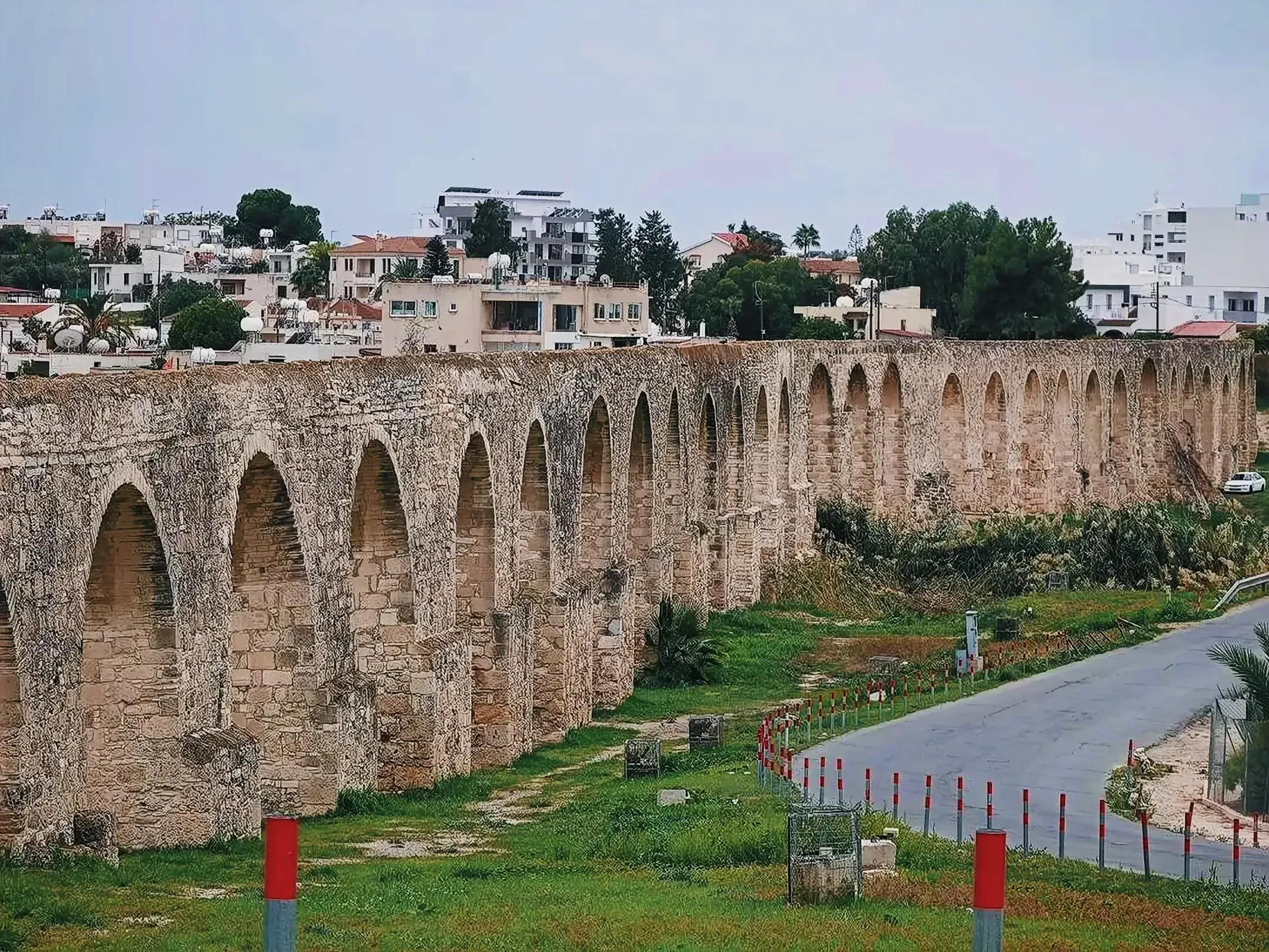
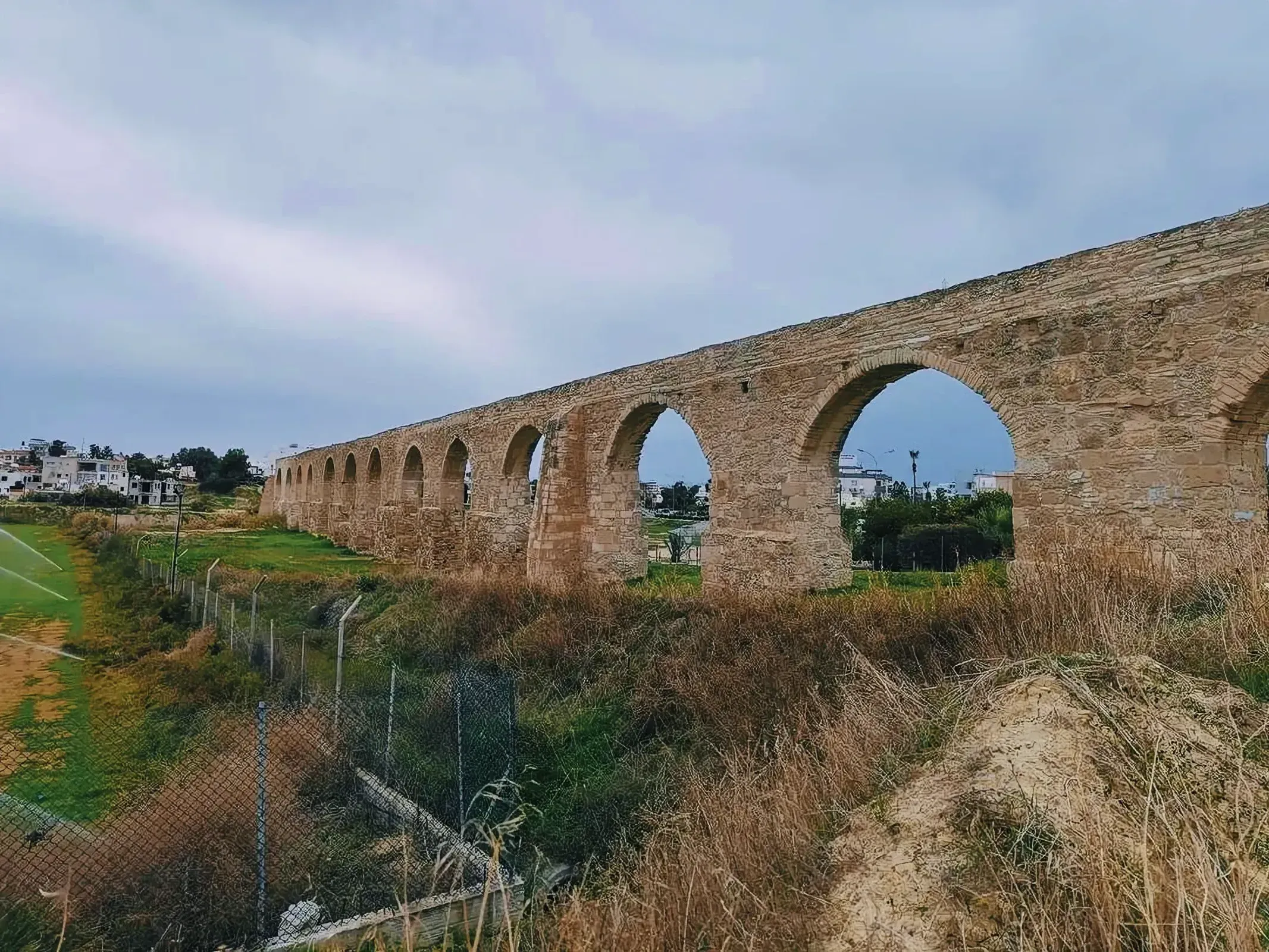
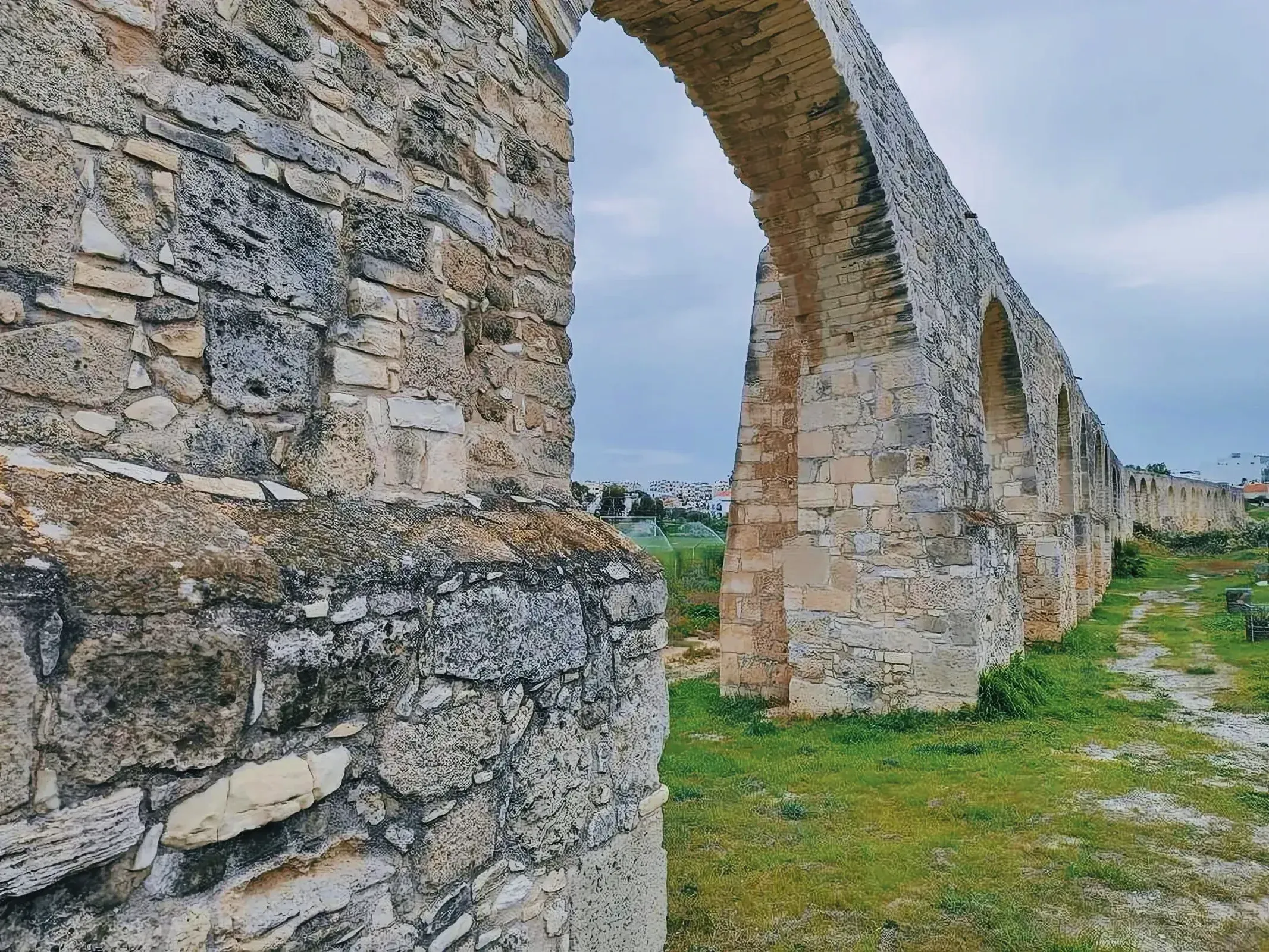
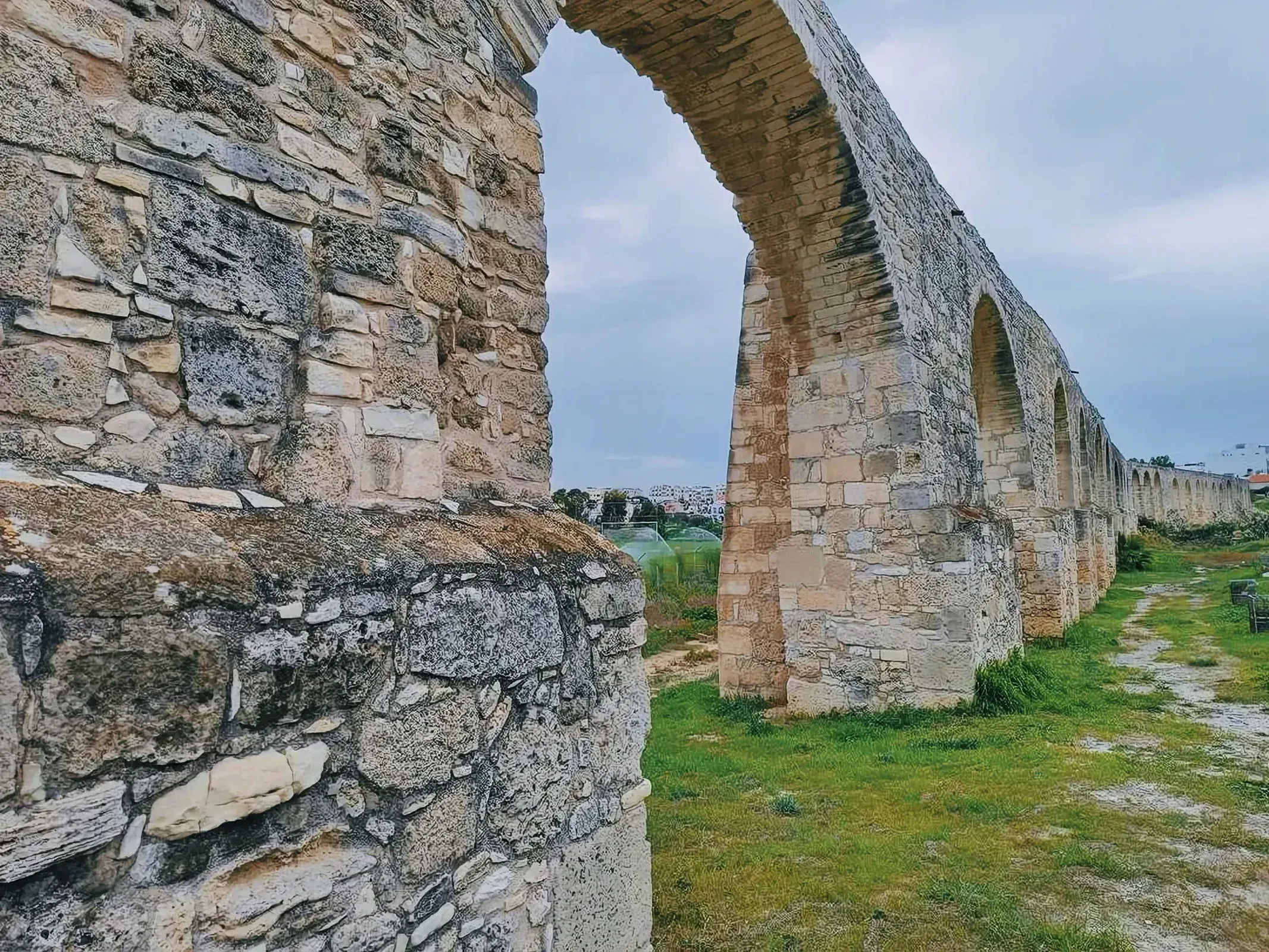
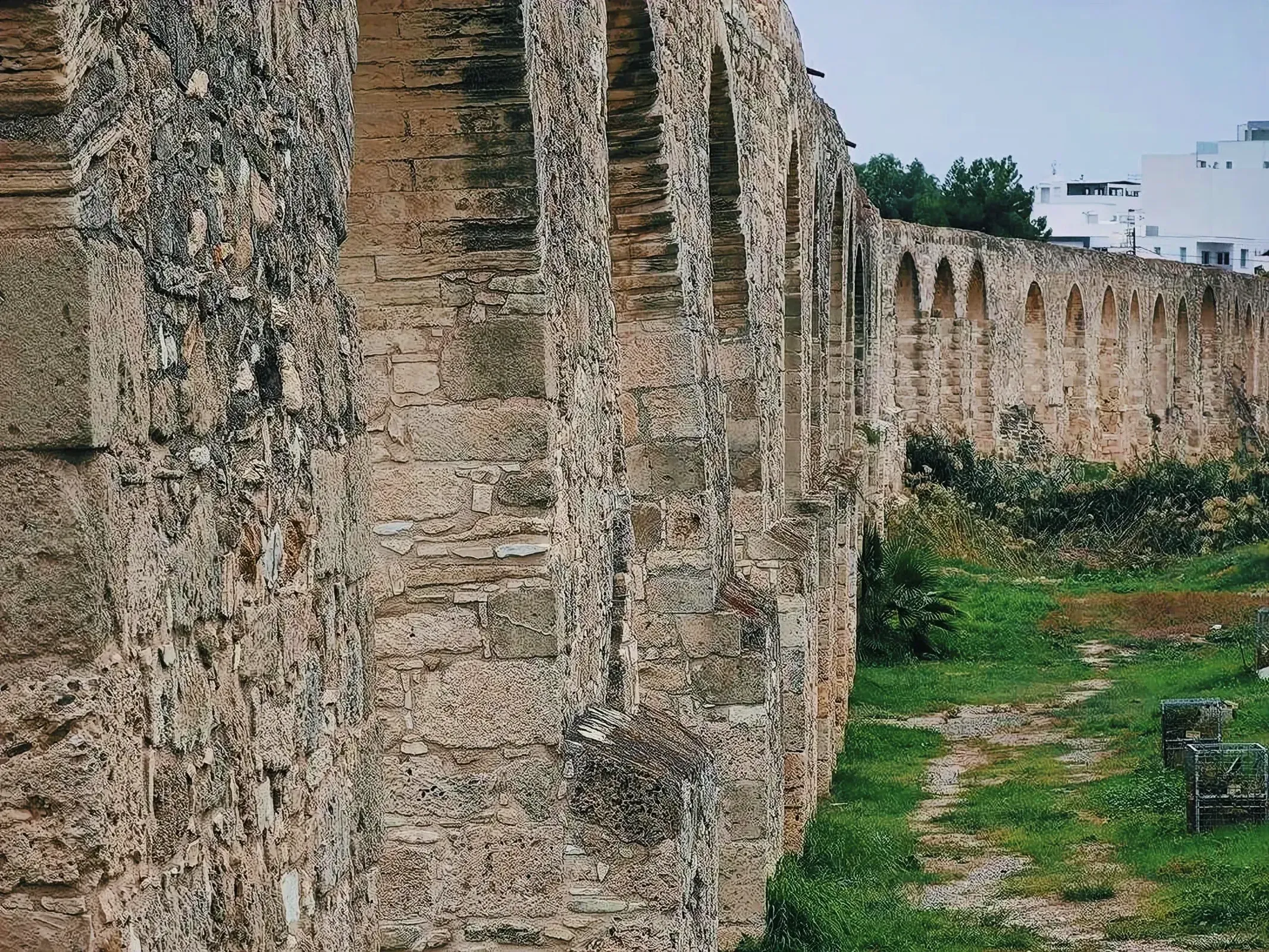
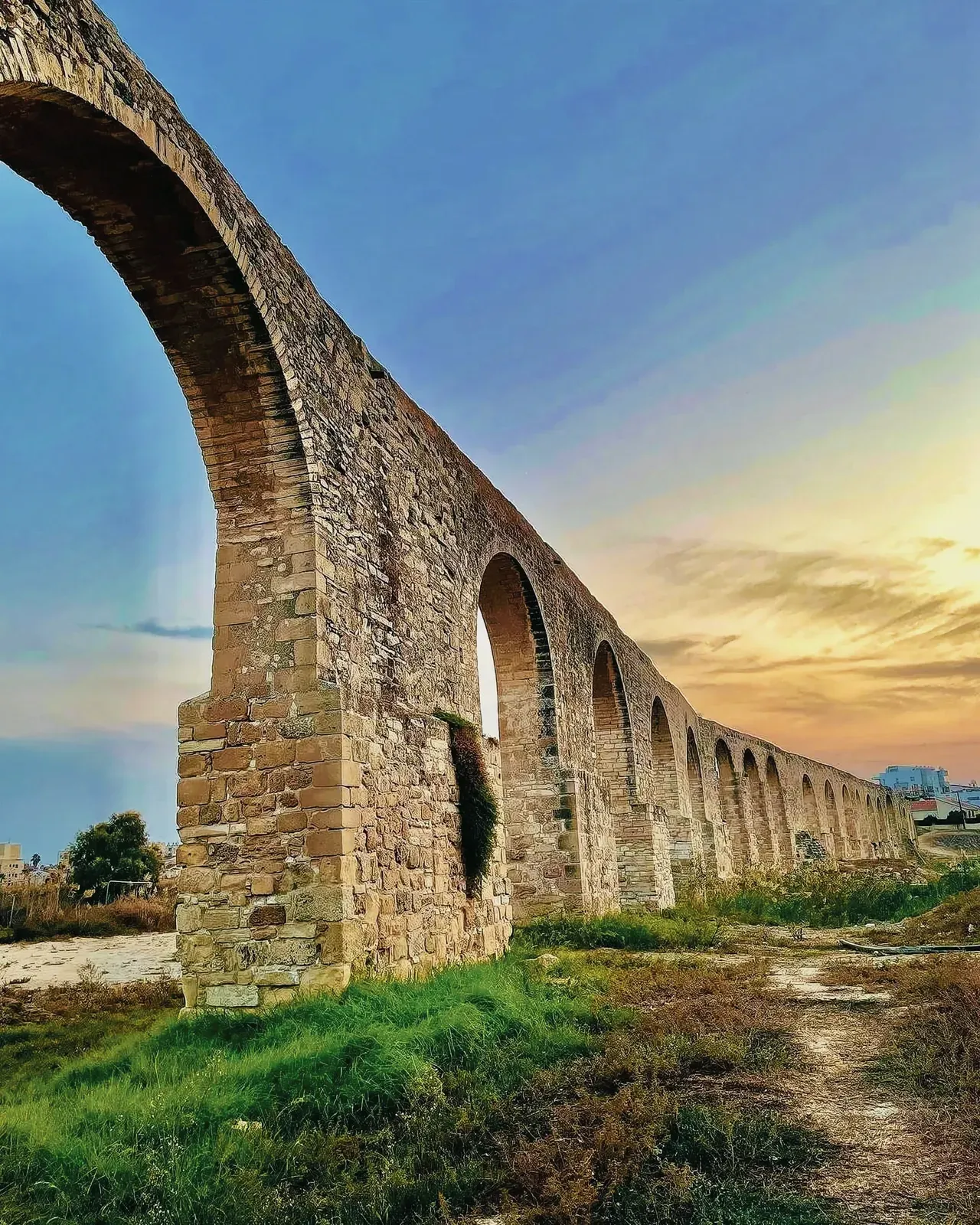
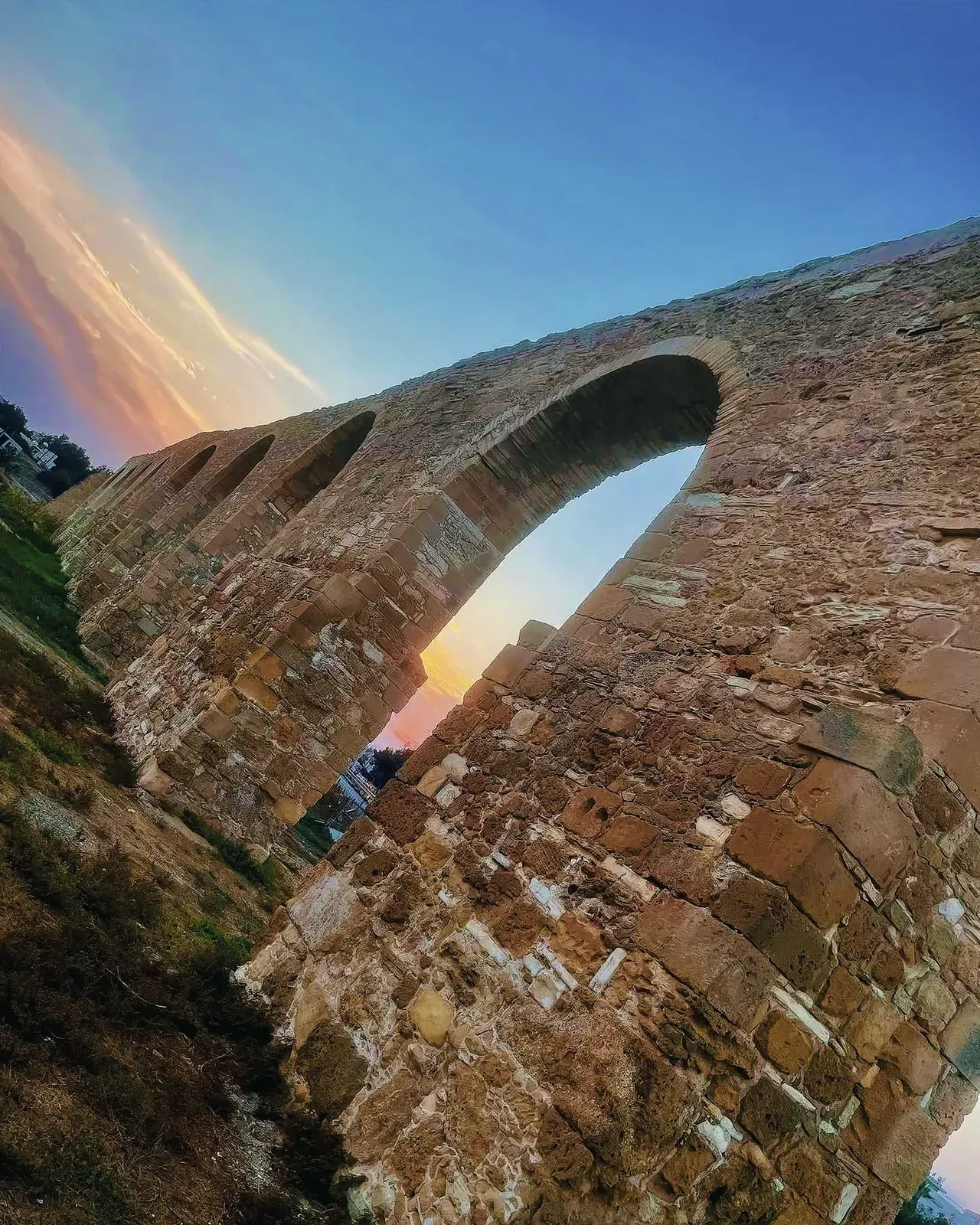
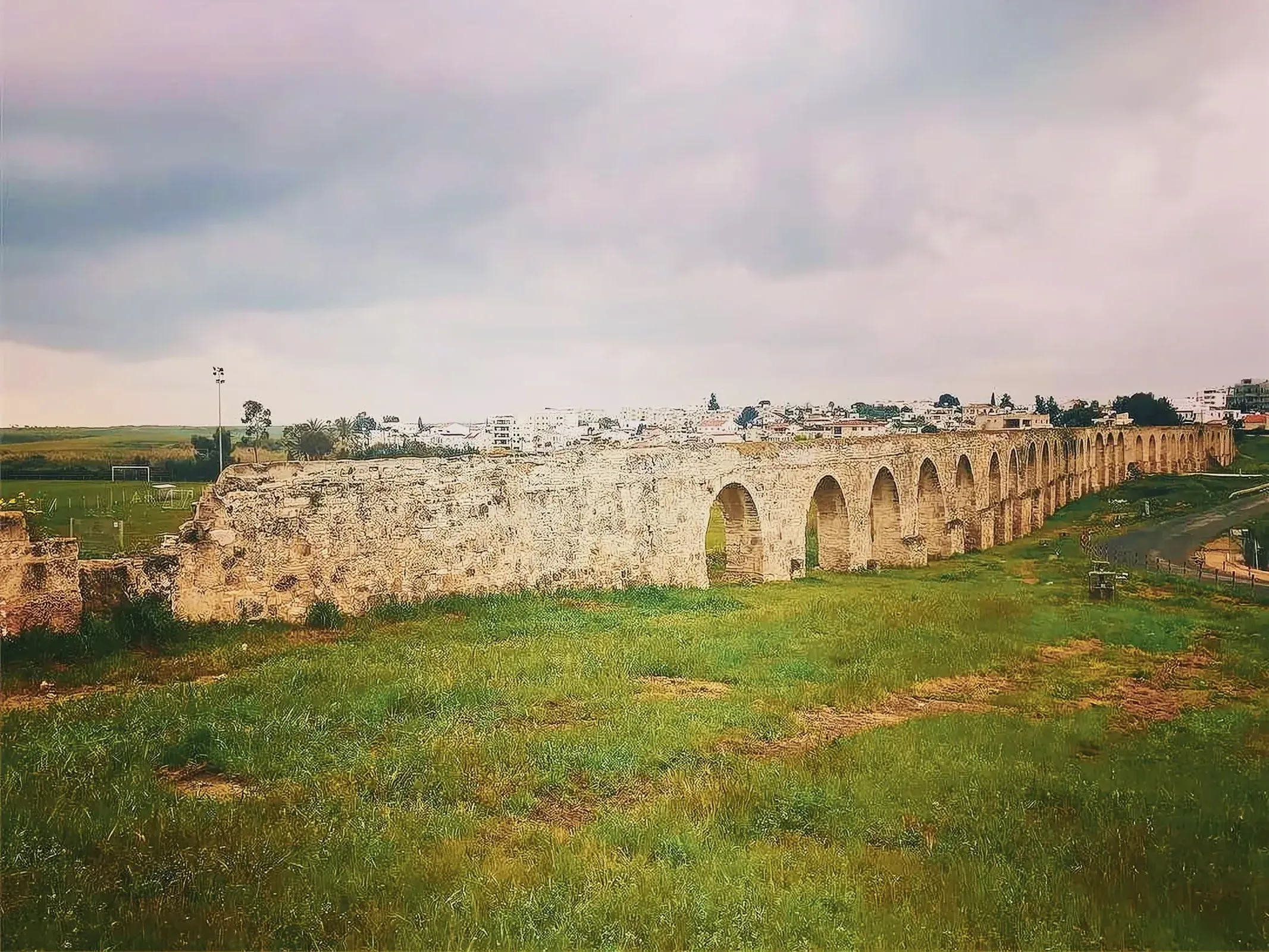
1. What is the historical significance of Kamares Aqueduct in Cyprus?
The Kamares Aqueduct, also known as the Bekir Pasha Aqueduct, is a historical monument in Larnaca, Cyprus that symbolizes Ottoman engineering excellence. Built in 1747, it provided water to the city until 1939. Today, it’s celebrated as an architectural marvel, a testament to Cyprus’s Ottoman heritage, and repurposed for cultural events, demonstrating its enduring legacy. Visitors can enjoy its illuminated arches and scenic surroundings near Larnaka Salt Lake.
2. What is the architectural style of Kamares Aqueduct?
The Kamares Aqueduct exemplifies the Ottoman influence in Cyprus and mirrors the Roman style aqueducts engineered to transport water over long distances. The structure consists of 75 arches and showcases a blend of practical function and aesthetic design that was characteristic of its era.
3. What can visitors do at Kamares Aqueduct?
Visitors to the Kamares Aqueduct can appreciate its historical significance and architectural grandeur. The aqueduct is beautifully illuminated at night and offers a serene natural setting. Visitors can walk along the cobbled path lined with benches, explore the adjacent footpath connected to Larnaka Salt Lake, and attend open-air concerts and community events held on the lawns in front of the aqueduct.
4. How can visitors navigate the Kamares Aqueduct and its surroundings?
To explore the aqueduct and its surroundings, visitors can take a scenic walk starting from the Salt Lake area through the woods and around the lake. The walk may be muddy in some areas but is generally easy to navigate. Along the way, visitors can enjoy other attractions, such as observing flamingoes that frequent the salt lake. It is recommended to research the aqueduct’s history beforehand, as there is no information board on-site. Visitors are also advised against climbing the structure for safety reasons and to preserve its integrity.

